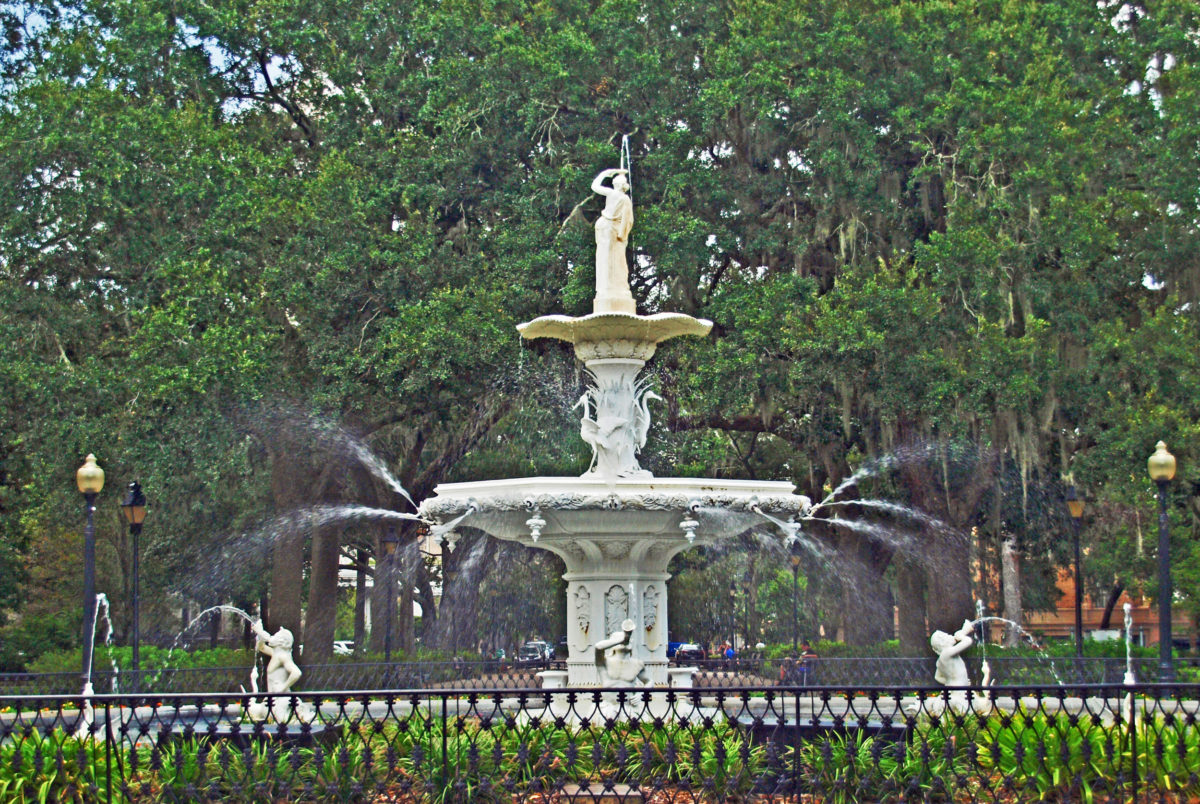by Alan K. Lee
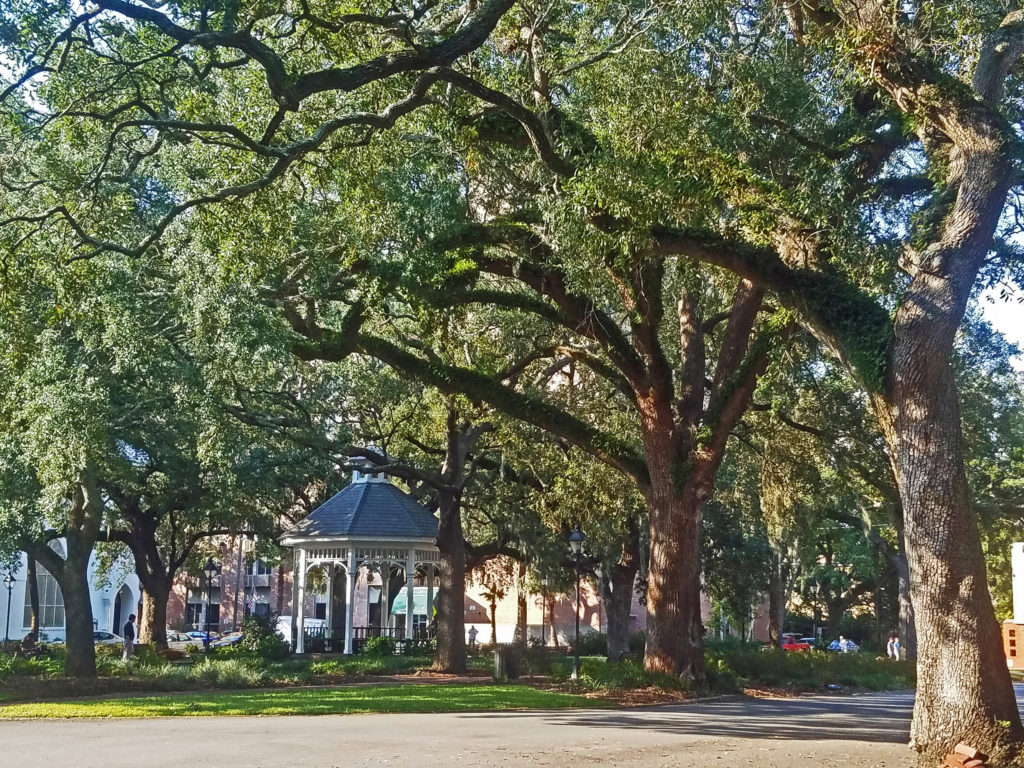
Savannah, Georgia is one of those iconic Old South cities that are on many people’s bucket list, and for good reason. It’s a beautiful city, and would be worth a visit just to see Forsyth Park and the 22 park-like Squares in the Historic District, with their live oaks draped in Spanish moss. Throw in a lively riverfront, hundreds of antebellum brick buildings and Victorian homes, interesting museums and art galleries, and dozens of fine dining options, and you have a place worthy of more than the day and a half that we had to explore it.
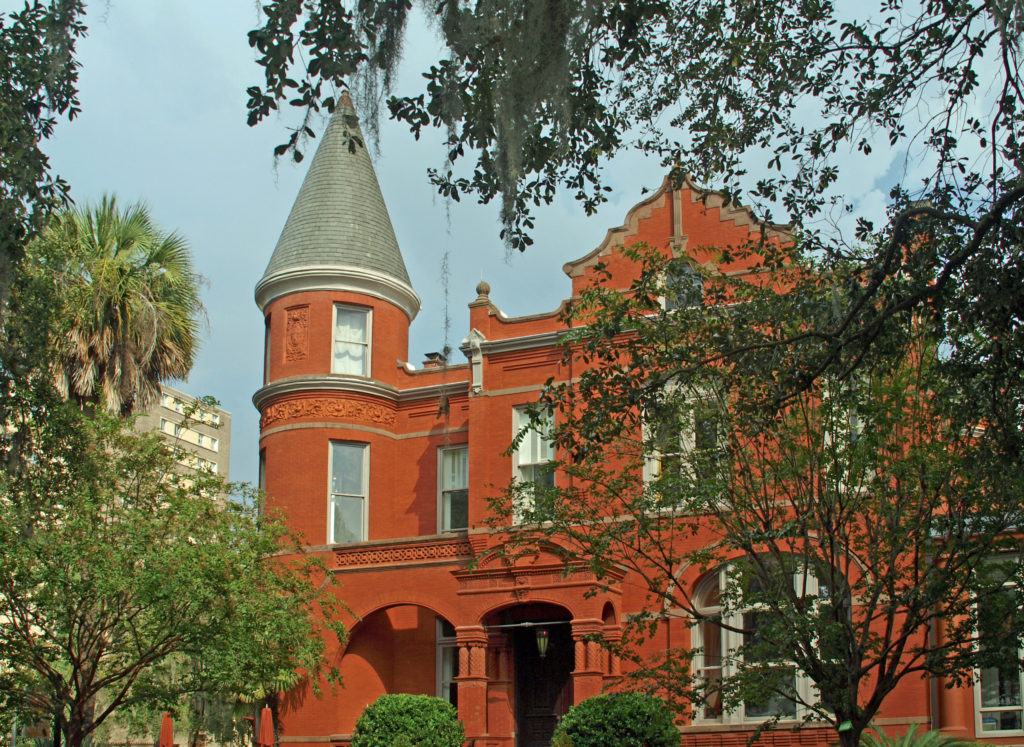
Savannah was the final destination in a trip that also took my wife and I to Asheville, North Carolina, Great Smoky Mountains National Park, Chimney Rock State Park, N.C., and Charleston, South Carolina.
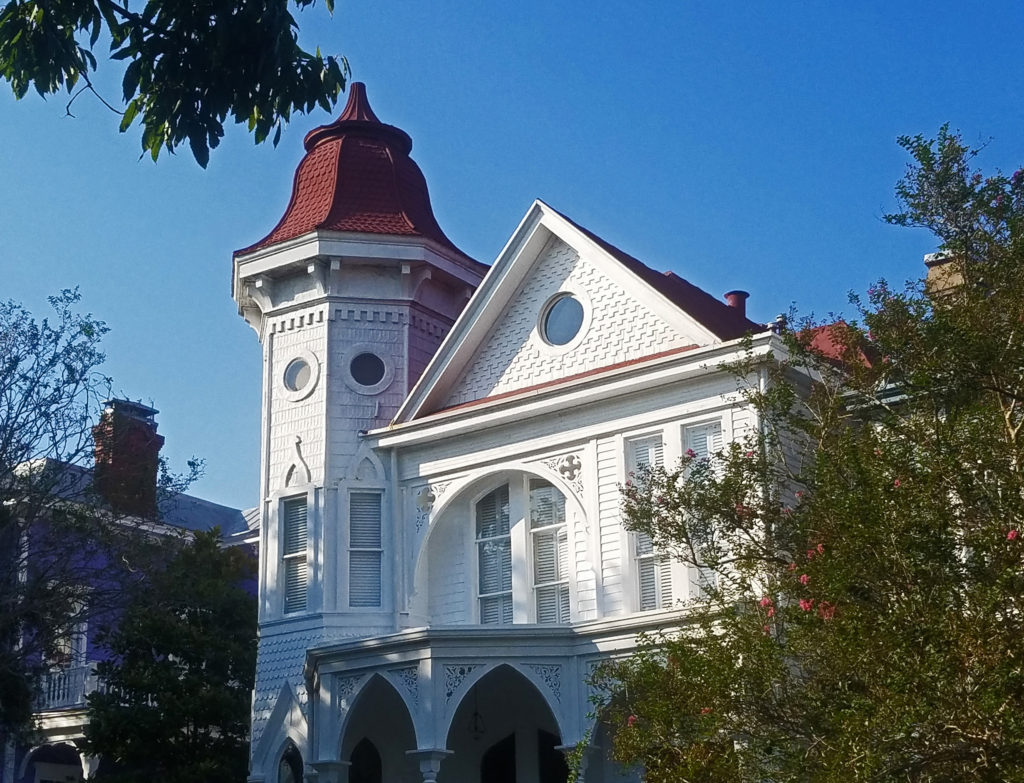 Savannah is an old city, founded in 1733. It was the first European settlement in Georgia, and the city’s history is an important aspect of its spirit and culture. Walking around in the Historic District, it’s not hard to envision yourself in another, long past, era.
Savannah is an old city, founded in 1733. It was the first European settlement in Georgia, and the city’s history is an important aspect of its spirit and culture. Walking around in the Historic District, it’s not hard to envision yourself in another, long past, era.
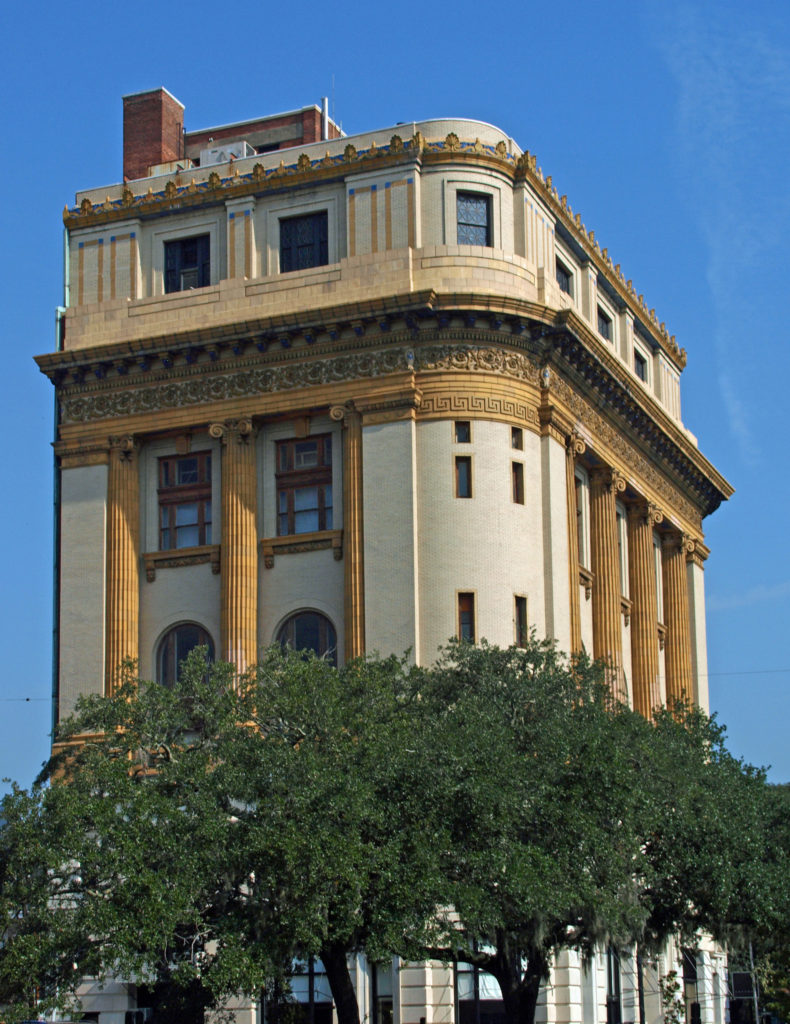 The entire Historic District was named a National Historic Landmark in 1966. The Savannah History Museum, itself a National Historic Landmark, is a good place to get a taste of Savannah’s long history. It’s located in the Savannah Visitor Center on Martin Luther King Jr. Boulevard. Other history museums of interest include the Davenport House Museum, the Owens-Thomas House and Slave Quarters, and the Ralph Marks Gilbert Civil Rights Museum.
The entire Historic District was named a National Historic Landmark in 1966. The Savannah History Museum, itself a National Historic Landmark, is a good place to get a taste of Savannah’s long history. It’s located in the Savannah Visitor Center on Martin Luther King Jr. Boulevard. Other history museums of interest include the Davenport House Museum, the Owens-Thomas House and Slave Quarters, and the Ralph Marks Gilbert Civil Rights Museum.
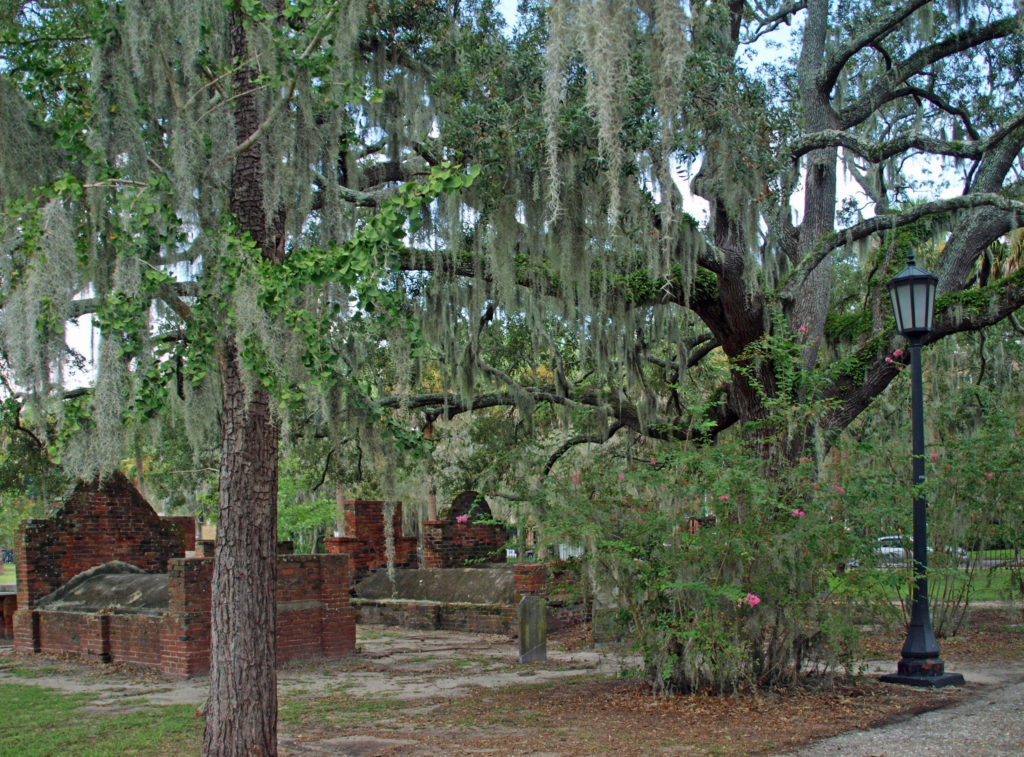
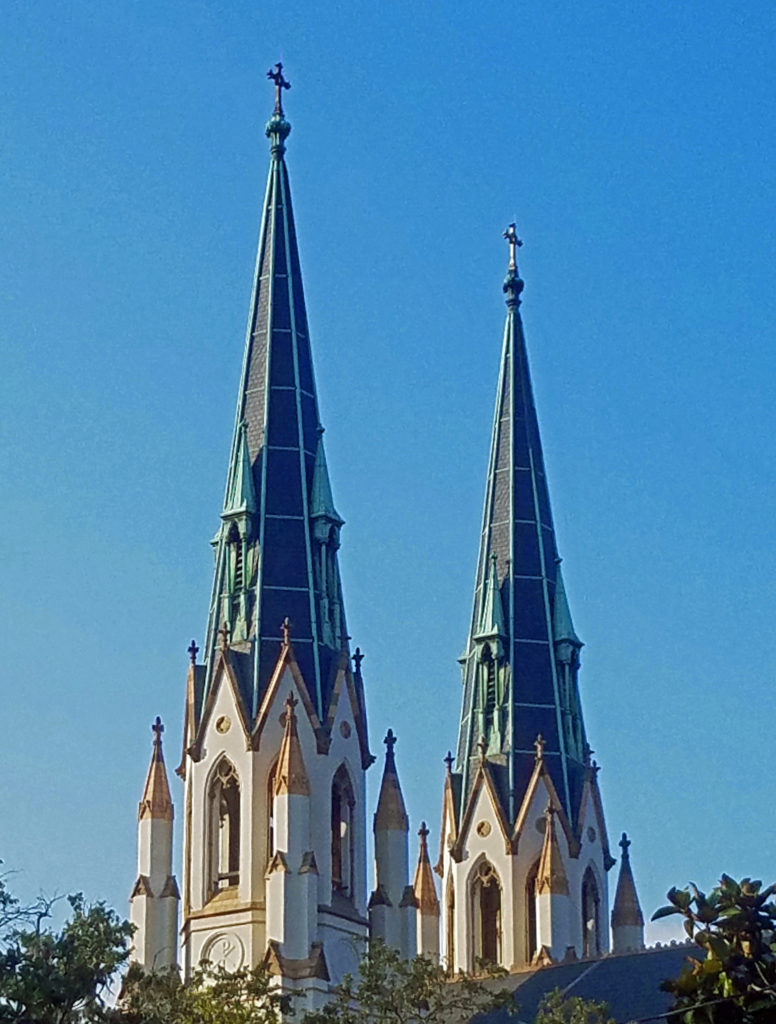 Savannah is a very walkable city. Guided walking tours of the Historic District are available for about $25 per person. There are also guided bike tours and public carriage tours available at similar rates. Private carriage tours run $100-125 for two people. Hop-on/hop-off trolley tours run $30-35 per person. Ghost tours are also a popular option for visitors.
Savannah is a very walkable city. Guided walking tours of the Historic District are available for about $25 per person. There are also guided bike tours and public carriage tours available at similar rates. Private carriage tours run $100-125 for two people. Hop-on/hop-off trolley tours run $30-35 per person. Ghost tours are also a popular option for visitors.
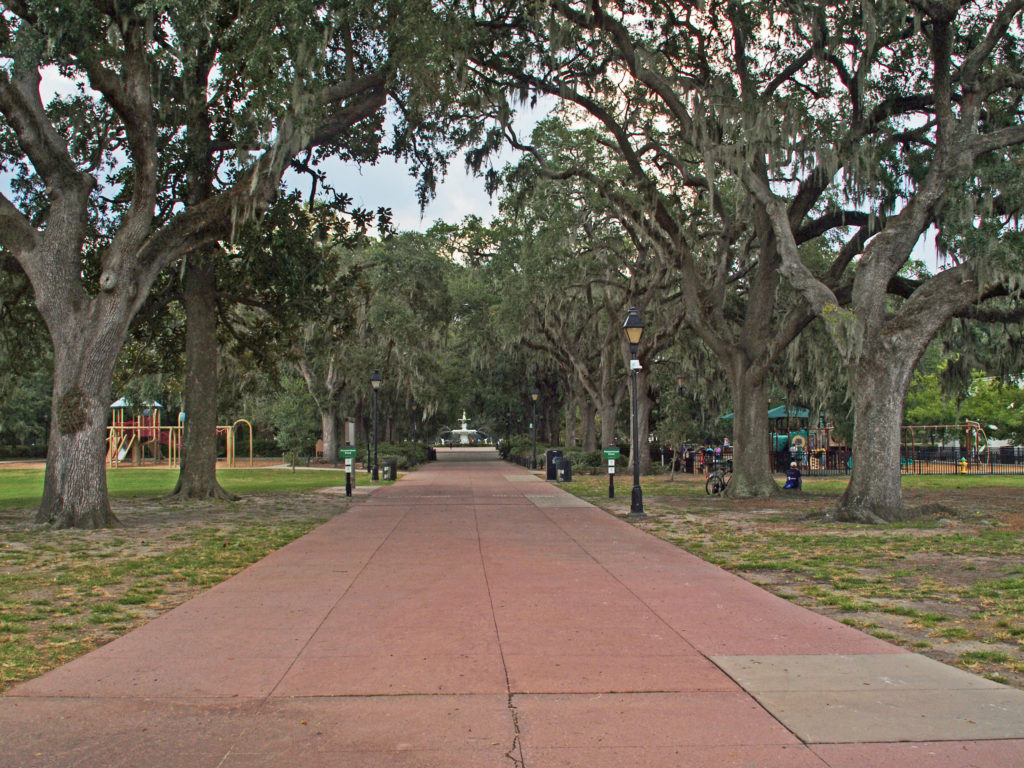 We opted to wander around on our own (but probably missed out on a lot of interesting information about the city). A good place to start a walking tour of your own is Forsyth Park, a 30 acre park at the south end of the Historic District. Its most notable feature is the Forsyth Fountain, but there is a lot more there to see. Enjoy the park’s gardens, paths, monuments, and the fountain, then head north toward the river and take in some (or all) of the 22 Squares and innumerable historic buildings, churches, and Victorian houses.
We opted to wander around on our own (but probably missed out on a lot of interesting information about the city). A good place to start a walking tour of your own is Forsyth Park, a 30 acre park at the south end of the Historic District. Its most notable feature is the Forsyth Fountain, but there is a lot more there to see. Enjoy the park’s gardens, paths, monuments, and the fountain, then head north toward the river and take in some (or all) of the 22 Squares and innumerable historic buildings, churches, and Victorian houses.
 Some of the more interesting structures in the Historic District include The Pirate’s House, mentioned in Robert Louis Stevenson’s Treasure Island, the city’s oldest building and now a popular restaurant, and The Olde Pink House, another of the city’s oldest structures and also a highly regarded restaurant. Not quite as old, but equally interesting, the Mercer House (officially the Mercer-Williams House Museum) was the site of the 1980s killing of a male prostitute that inspired the book (and movie) Midnight In the Garden of Good and Evil.
Some of the more interesting structures in the Historic District include The Pirate’s House, mentioned in Robert Louis Stevenson’s Treasure Island, the city’s oldest building and now a popular restaurant, and The Olde Pink House, another of the city’s oldest structures and also a highly regarded restaurant. Not quite as old, but equally interesting, the Mercer House (officially the Mercer-Williams House Museum) was the site of the 1980s killing of a male prostitute that inspired the book (and movie) Midnight In the Garden of Good and Evil.
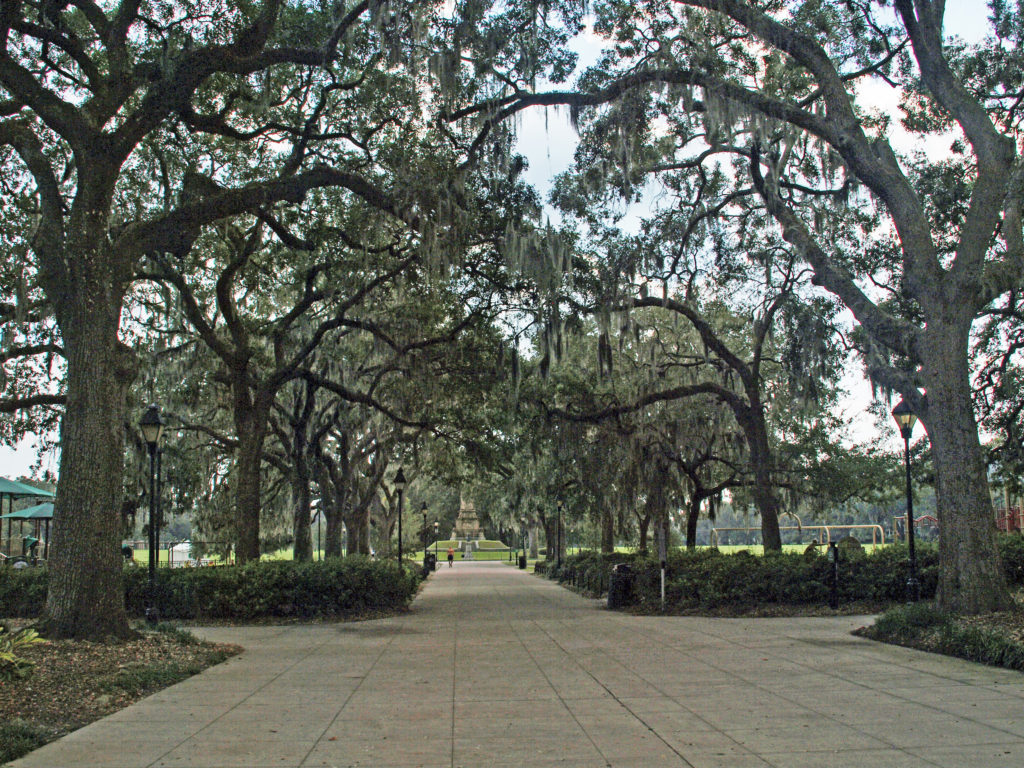
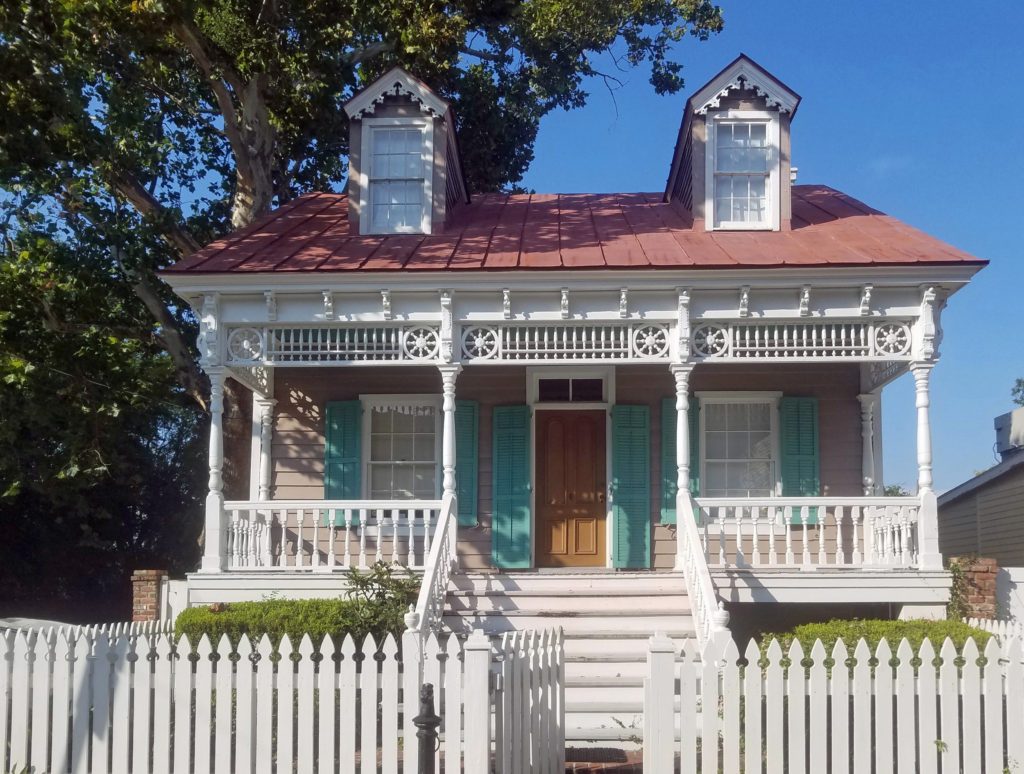 Near the north end of the Historic District, City Market is a four block area of restaurants, galleries, shops, bars, and offices that is something of a destination in its own right. Get a frozen daiquiri to go (yes, it’s legal in Savannah) at Wet Willie’s and make your way to River Street.
Near the north end of the Historic District, City Market is a four block area of restaurants, galleries, shops, bars, and offices that is something of a destination in its own right. Get a frozen daiquiri to go (yes, it’s legal in Savannah) at Wet Willie’s and make your way to River Street.
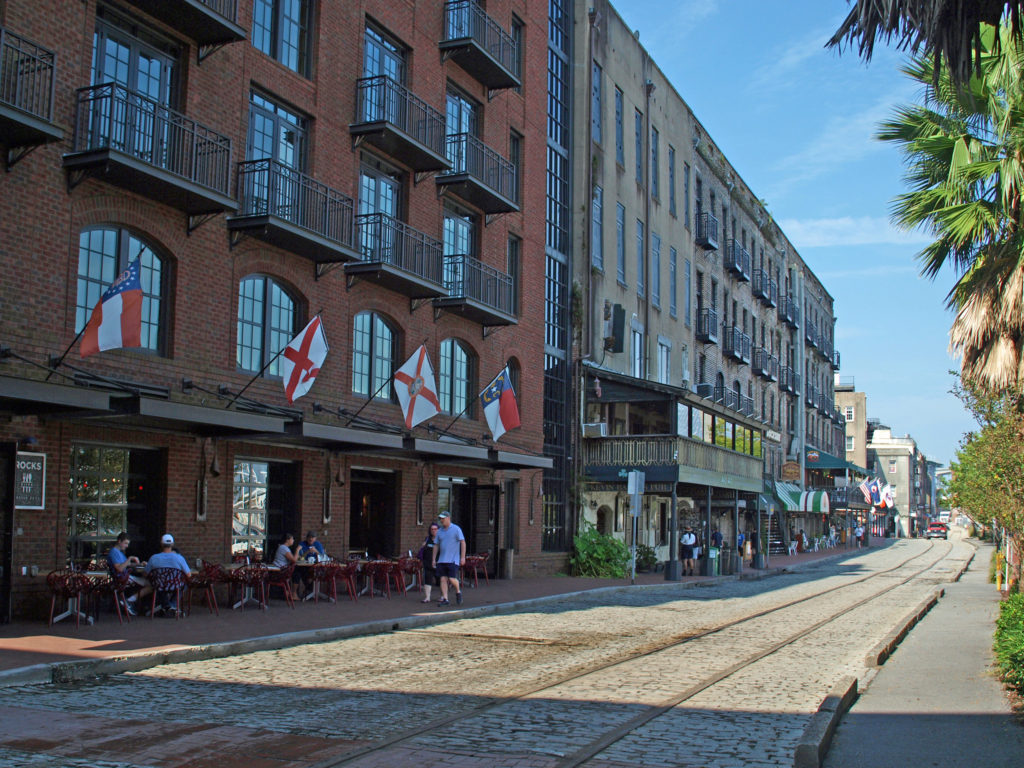 The buildings along River Street were once cotton warehouses. Today they house shops, restaurants, bars, and art galleries. River Street has its share of tacky gift shops, but it also has some interesting boutiques, antique shops, and art galleries. Among the many restaurants are Vic’s On the River, Huey’s, The Shrimp Factory, and Joe’s Crab Shack. If you need a frozen daiquiri refill, there’s another Wet Willie’s on River Street.
The buildings along River Street were once cotton warehouses. Today they house shops, restaurants, bars, and art galleries. River Street has its share of tacky gift shops, but it also has some interesting boutiques, antique shops, and art galleries. Among the many restaurants are Vic’s On the River, Huey’s, The Shrimp Factory, and Joe’s Crab Shack. If you need a frozen daiquiri refill, there’s another Wet Willie’s on River Street.
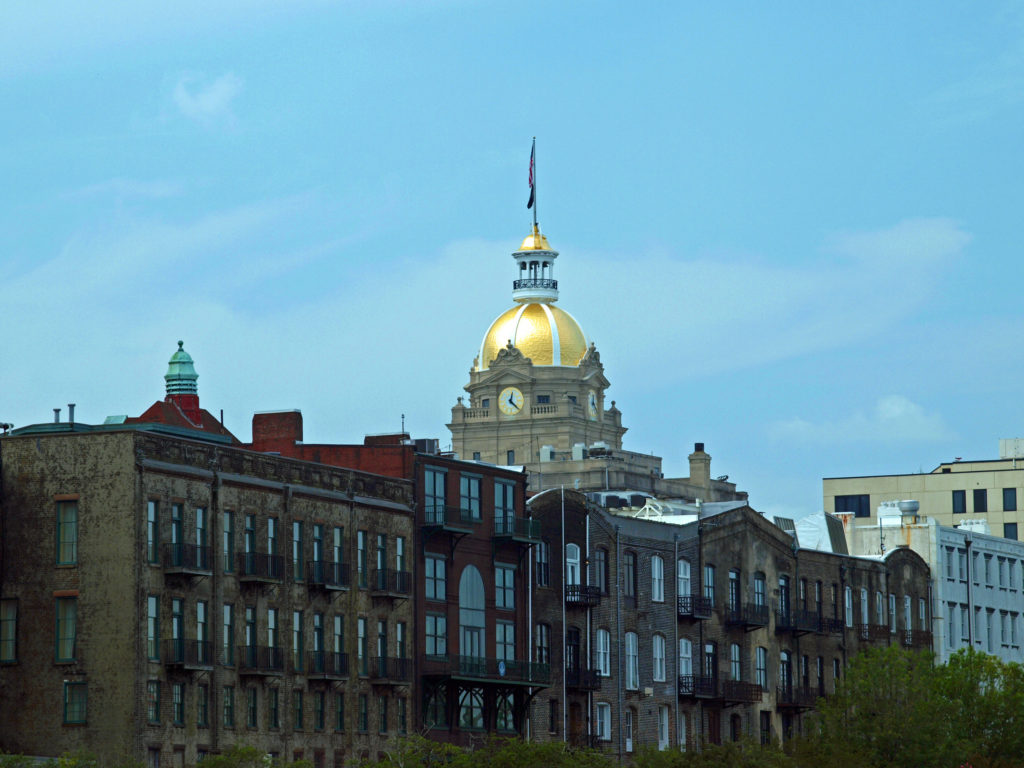
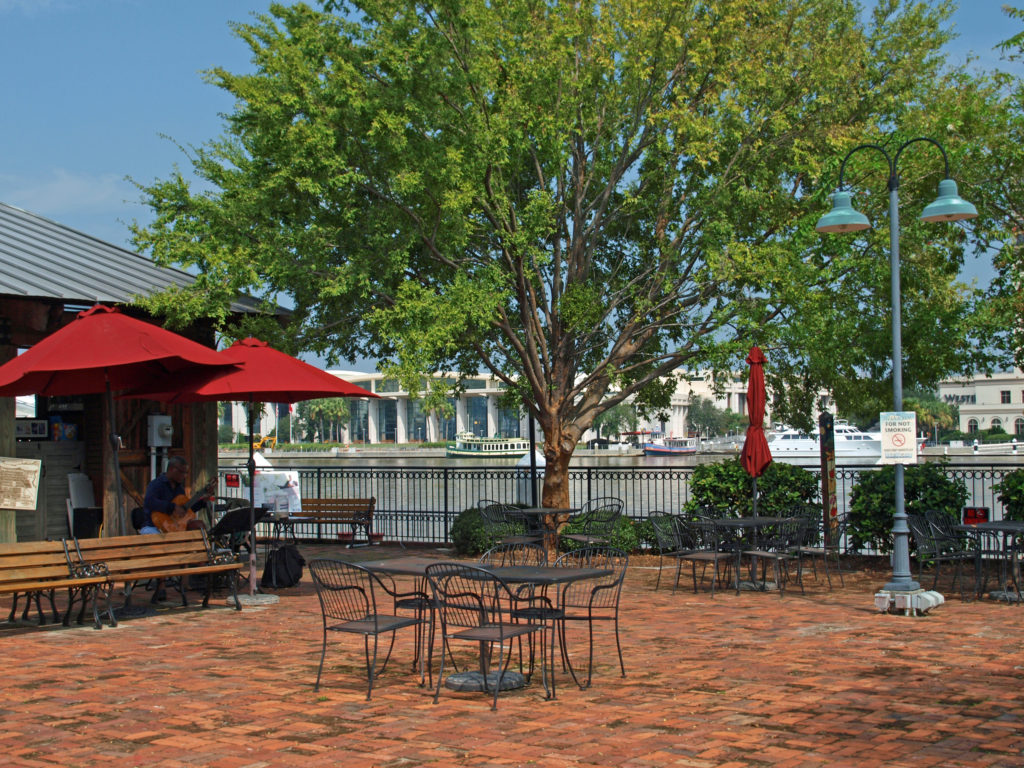 There are no shortage of other places along the river to wet your whistle, including The Warehouse Bar and Grill, Dub’s Public House, The Cotton Exchange Tavern, and a couple of rooftop bars, Top Deck Bar and Rocks On the Roof. And there are more restaurants and bars on Bay Street on the top of the bluff.
There are no shortage of other places along the river to wet your whistle, including The Warehouse Bar and Grill, Dub’s Public House, The Cotton Exchange Tavern, and a couple of rooftop bars, Top Deck Bar and Rocks On the Roof. And there are more restaurants and bars on Bay Street on the top of the bluff.
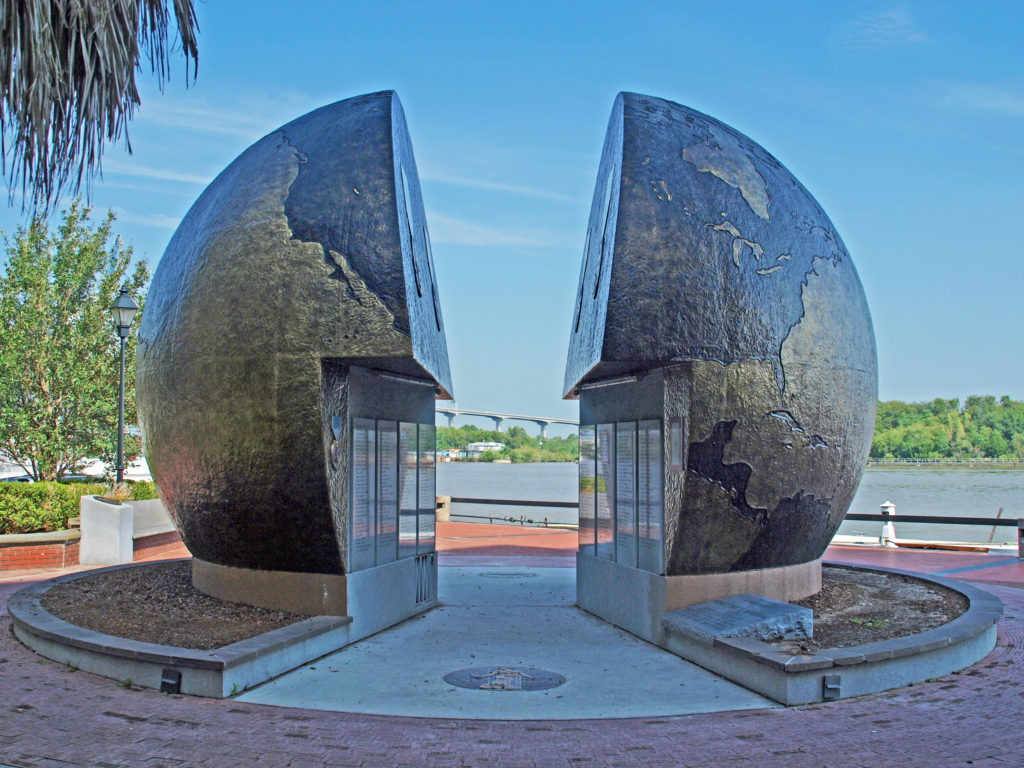
Along the riverfront, check out the World War II Memorial, the Savannah Waving Girl statue, the Olympic Yachting Cauldron from the 1996 Olympic Games, and River Street Market Place. Take one of the Savannah Belle ferries across the river to Hutchison Island. There’s not much on the island of interest except the Westin Savannah Harbor Hotel and the Savannah Convention Center, but the ferry will give you a good view of the waterfront and the golden dome of City Hall on the bluff above River Street. And the ferry is free.
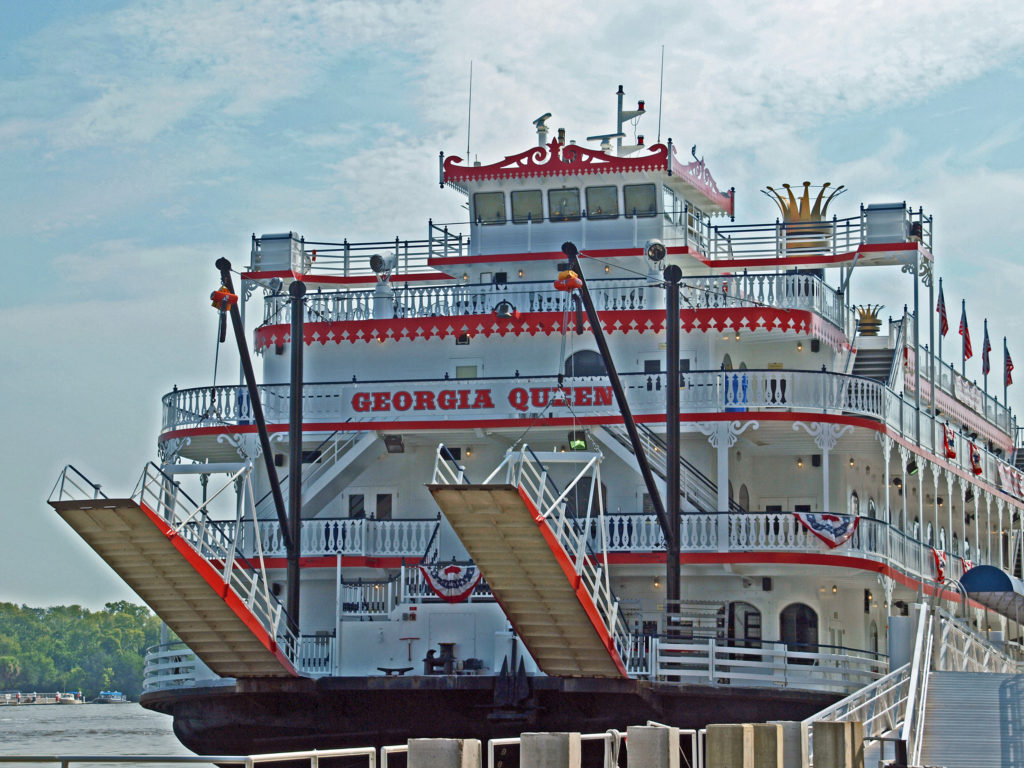
River cruises are a popular tourist activity in Savannah. Savannah Riverboat Cruises offers lunch and dinner cruises, a Monday night gospel cruise, and sunset and moonlight cruises on their two large sternwheeler-style river boats, the Georgia Queen and the Savannah River Queen. Dolphin Magic Tours guarantees that you will see bottlenose dolphins “or your next cruise is free,” which is not worth much if you’re from the west Coast and are only in town for a day. But their reviews are generally positive. We didn’t have time to take either of those tours, but I’m sure that both would be enjoyable
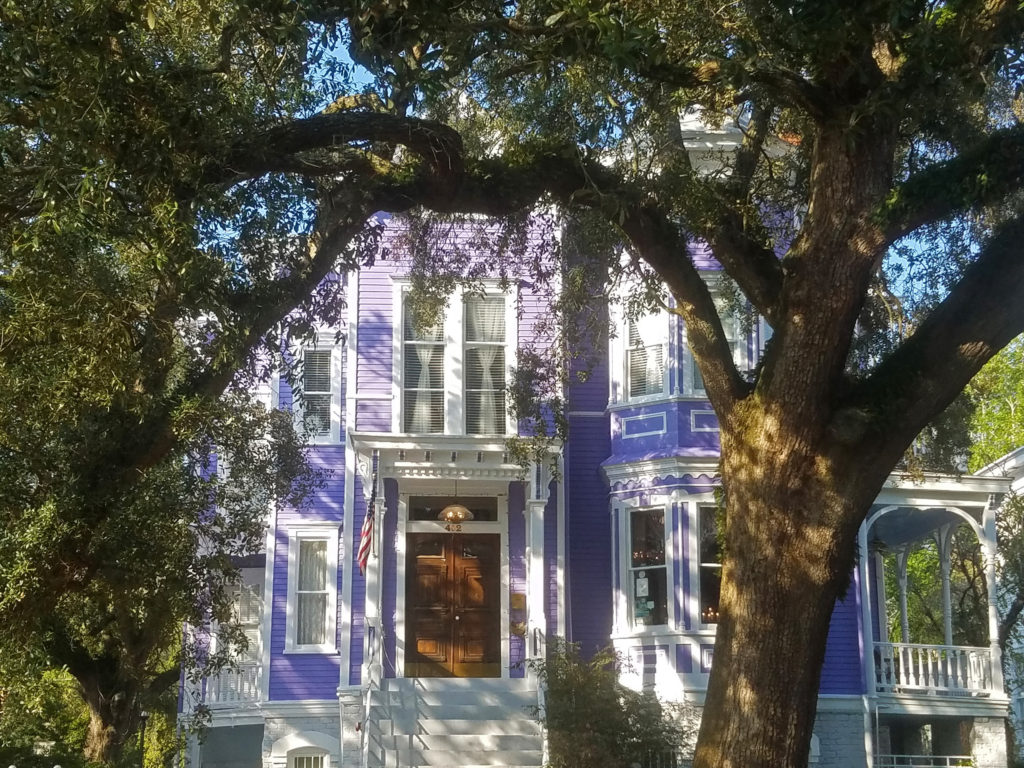
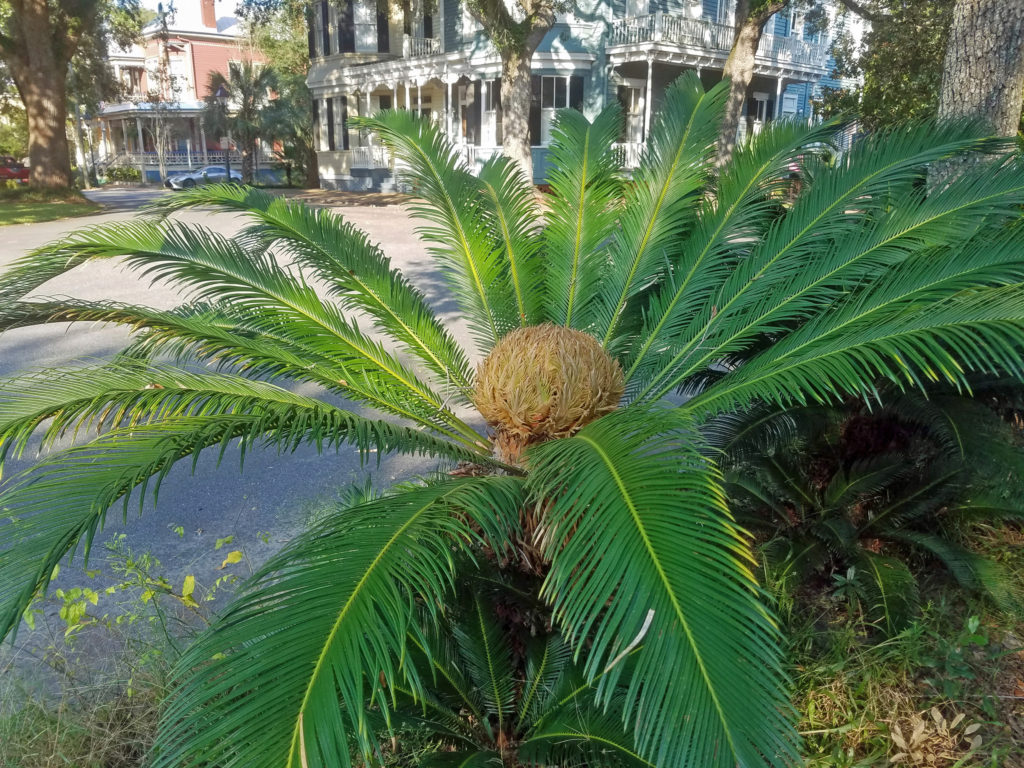 There’s much to see and do in Savannah that time didn’t allow. We had to skip many things. We checked out only a couple of the city’s art galleries, for example, and didn’t make it to other nearby destinations such as Fort Jackson and Tybee Island. Savannah would definitely worth another and longer visit if it were a little closer to home, but who knows, we may be back someday to take in what we missed on our first visit.
There’s much to see and do in Savannah that time didn’t allow. We had to skip many things. We checked out only a couple of the city’s art galleries, for example, and didn’t make it to other nearby destinations such as Fort Jackson and Tybee Island. Savannah would definitely worth another and longer visit if it were a little closer to home, but who knows, we may be back someday to take in what we missed on our first visit.
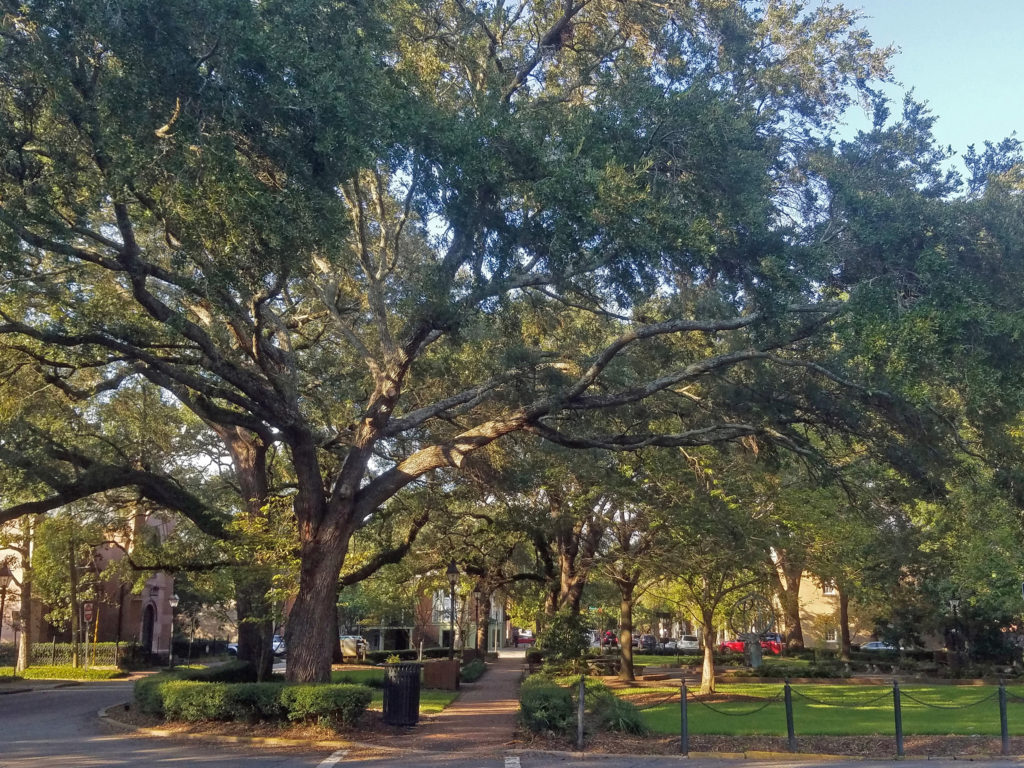
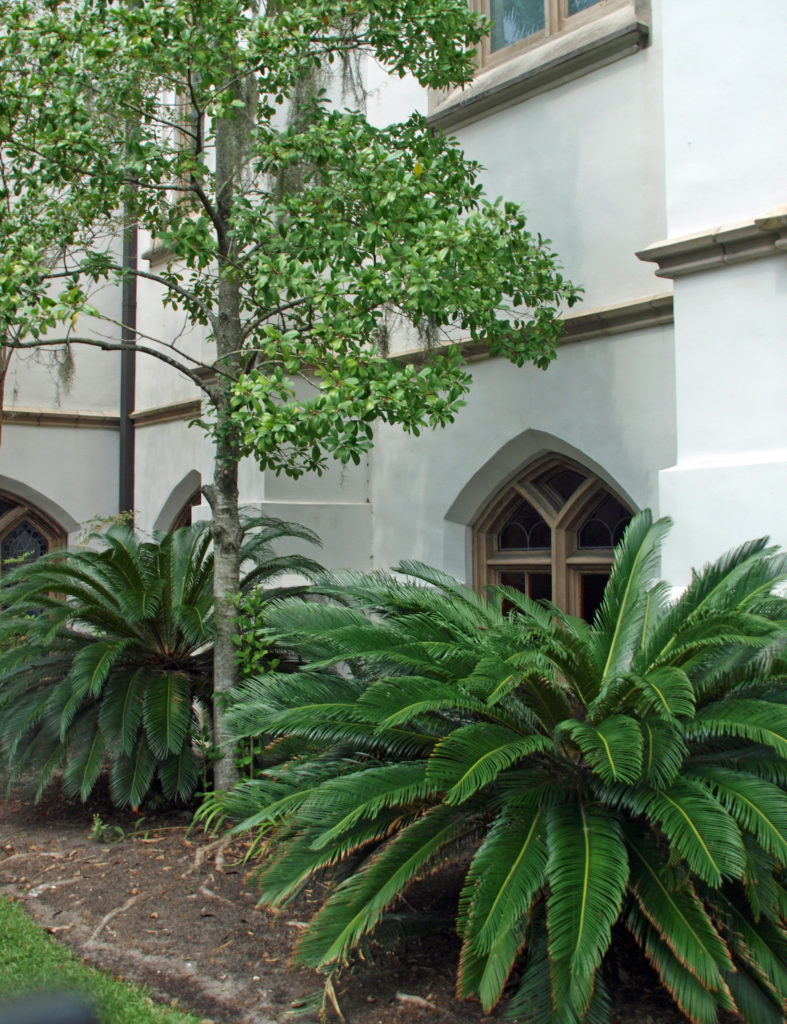 Originally posted January 24, 2020. Updated and re-posted April 15, 2023.
Originally posted January 24, 2020. Updated and re-posted April 15, 2023.
All photos © Alan K. Lee

